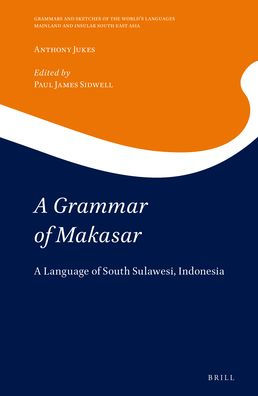A Grammar of Makasar: A Language of South Sulawesi, Indonesia
The book is a grammar of the Makasar language, spoken by about 2 million people in South Sulawesi, Indonesia. Makasarese is a head–marking language which marks arguments on the predicate with a system of pronominal clitics, following an ergative/absolutive pattern. Full noun phrases are relatively free in order, while pre-predicate focus position which is widely used. The phonology is notable for the large number of geminate and pre–glottalised consonant sequences, while the morphology is characterised by highly productive affixation and pervasive encliticisation of pronominal and aspectual elements. The work draws heavily on literary sources reaching back more than three centuries; this tradition includes two Indic based scripts, a system based on Arabic, and various Romanised conventions.
1132853198
A Grammar of Makasar: A Language of South Sulawesi, Indonesia
The book is a grammar of the Makasar language, spoken by about 2 million people in South Sulawesi, Indonesia. Makasarese is a head–marking language which marks arguments on the predicate with a system of pronominal clitics, following an ergative/absolutive pattern. Full noun phrases are relatively free in order, while pre-predicate focus position which is widely used. The phonology is notable for the large number of geminate and pre–glottalised consonant sequences, while the morphology is characterised by highly productive affixation and pervasive encliticisation of pronominal and aspectual elements. The work draws heavily on literary sources reaching back more than three centuries; this tradition includes two Indic based scripts, a system based on Arabic, and various Romanised conventions.
153.0
In Stock
5
1

A Grammar of Makasar: A Language of South Sulawesi, Indonesia
440
A Grammar of Makasar: A Language of South Sulawesi, Indonesia
440Hardcover
$153.00
153.0
In Stock

Product Details
| ISBN-13: | 9789004363687 |
|---|---|
| Publisher: | Brill Academic Publishers, Inc. |
| Publication date: | 12/24/2019 |
| Series: | Grammars and Sketches of the World's Languages / Mainland and Insular South East Asia Series , #10 |
| Pages: | 440 |
| Product dimensions: | 6.10(w) x 9.25(h) x 0.00(d) |
About the Author
From the B&N Reads Blog
